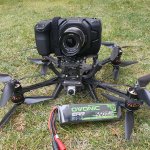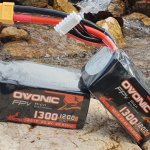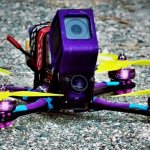As a wireless transmission, it will inevitably be affected by the environment or other factors during use, such as weather, obstructions, and transmission lines.
1. What impact will rain, snow or other bad weather have on UAV FPV image transmission?
UAV FPV image transmission is used outdoors. In bad weather, such as wind, rain, snow, etc., have certain influence on the signal transmission of UAV FPV image transmission. But light snow and light rain will not have much impact on UAV FPV transmission. After all, the UAV FPV image transmission has excellent waterproof, dustproof, heat-resistant and cold-resistant functions. As long as it is securely fixed, it will not be a problem to prevent the device from being deflected by a blizzard.
2. What should I do if there is obstruction on the UAV FPV transmission line?
UAV FPV image transmission uses microwave for wireless transmission. The transmission path of microwave is along a straight line, so there should be no obstructions in the middle. If there is a little obstruction, it will not be a problem, but it will cause some impact. If there is a large area of obstruction, the following three methods must be used:
(1) Avoid obstructions. Common methods include vertical poles or moving the transmitter/receiver of the UAV FPV image transmission until there is no obstruction between the transmission ends.
(2) Using a relay device, set a relay point with no obstruction between the transmitter and receiver, and then add two devices to receive the signal from the transmitter and transmit to the receiver.
(3) Remove obstructions. If it is some trees, you can remove the branches and leaves that block the signal transmission. If it is a large building or a mountain that cannot be removed, you can only perform the first or second type. Way out.
3. How to align the transmitter and receiver directions for UAV FPV image transmission?
The UAV FPV image transmission requires signal alignment to achieve transmission. If the UAV FPV image transmission is not aligned, within a few hundred meters, the distance that can be seen with the naked eye can be directly aligned with the human hand, while referring to the strength of the device itself Indicator light. But if the distance is invisible to the naked eye, you can use the positioning system to query the latitude and longitude of the devices at both ends, and then adjust the latitude and longitude angle between the two ends. This is currently a common and practical method. According to actual applications, our principle is that the signal strength can be high or low.
4. What is the difference between a directional antenna and an omnidirectional antenna for UAV FPV image transmission?
In the problem of correcting the direction, the use of antennas is currently a more effective method. The coverage of a directional antenna can only be effective in front of the antenna. For example, a directional antenna with only 60 degrees, then its coverage is 60 degrees in front, while the coverage of an omnidirectional antenna is 360 degrees in the horizontal plane. Directional antennas have strong directivity, so they are mostly used for long-distance wireless transmission, while omnidirectional antennas are not strong, so they are mostly used for short-distance wireless coverage. UAV FPV image transmission equipment is very simple to operate, but it will be more effective if you can pay attention to various problems in use.



